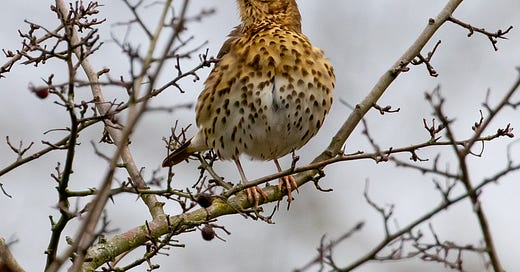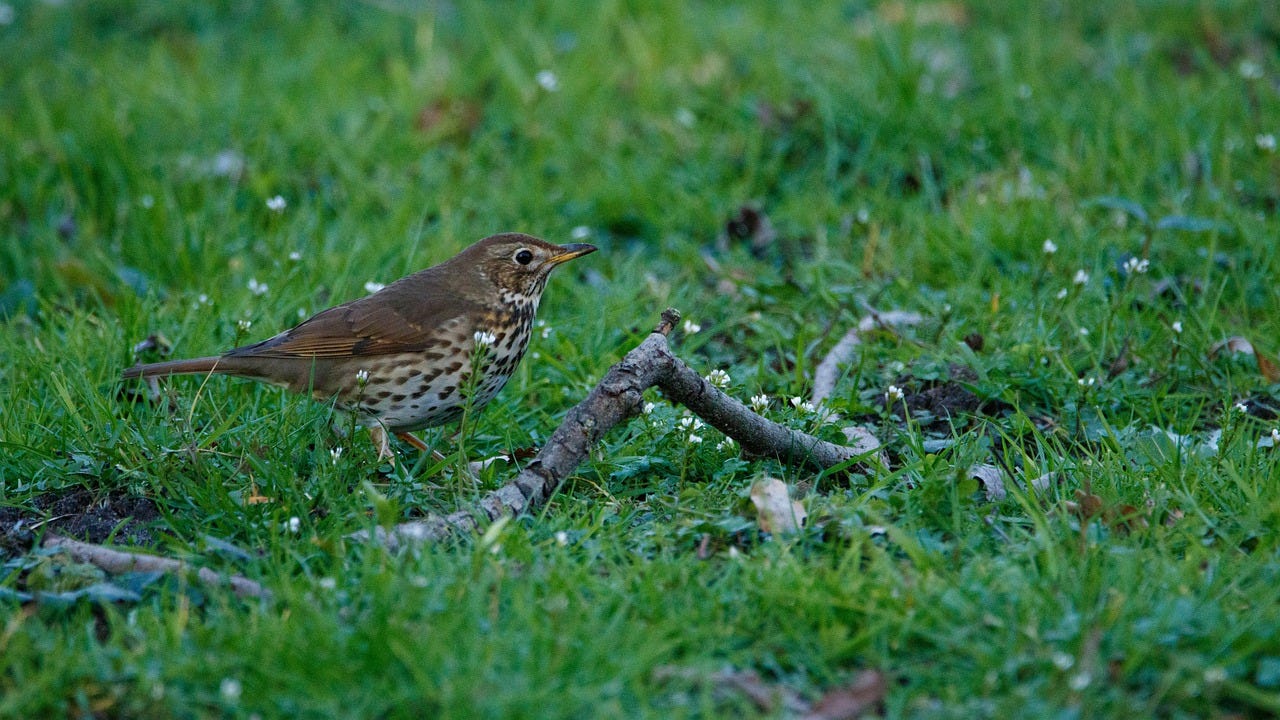Is the sound of a song thrush enjoyable?
The answer may depend on which particular song thrush you’re listening to - and how close to your bedroom window one’s decided to sing. At dawn.
Song thrushes are powerful, improvisational performers. The variety for which they are famed makes them fascinating to listen to, and can be quite confusing.
The key to identifying them by song is their habit of repeating a note or short phrase several times, before switching to something else and repeating that instead.
The recording above is a clear example. It’s as if the bird discovers a new sound, excitedly practises, and then thinks of something new to try.
The volume and the repetition means the song is sometimes mistaken for the much scarcer nightingale. However, song thrushes are with us all year, and sing for much of it, not just April and May.
They can often be heard on a still winter’s day, and become especially persistent in early spring. That’s a good time to get to know them, before their variety show gets mixed up with so many other new sounds in the gathering chorus.
The number of song thrushes has declined steeply in recent decades. They are still to be found in most woodlands, and in many large gardens, parks and wooded countryside areas, but they are nowhere near the everyday sight they once were.
During the first lockdown in 2020, the arrival of a song thrush in our neighbour’s garden was cause for celebration, and an attempt at a wobbly video from the bedroom window.
For us, the song is most welcome. And that hawthorn blossom will be too.
Hang in there, everyone.
~ Charlie
There’s a new Shriek of the Week every Friday. If you know someone who might like a dose of birdsong in their inbox this year, please pass this along.
You can listen to more sounds via the Birdsong Academy website, where there are also details of the British Birdsong 101 course that begins in February.



